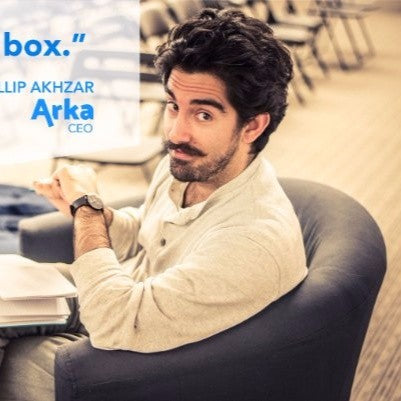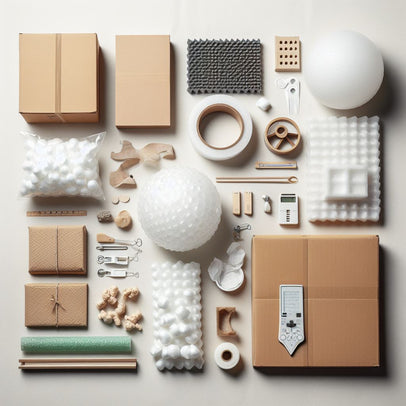Packaging 101: The Complete Guide
- Packaging 101
- Types of Packaging
- Aseptic Packaging
- Blister Packaging
- Biodegradable Packaging
- Bulk Packaging
- Carbon Neutral Packaging
- Circular Packaging
- Clamshell Packaging
- Compostable Packaging
- Cornstarch Packaging
- Corrugated Packaging
- Discreet Packaging
- Ecommerce Packaging
- Flexible Packaging
- Frustration Free Packaging
- Retail Packaging
- Secondary Packaging
- Smart Packaging
- Sustainable Packaging
- What is a PR Package?
- What is a Poly Mailer?
- Packaging Design Ideas
- AI Packaging Design
- Bakery Packaging Ideas
- Bath Bomb Packaging Ideas
- Bath Salt Packaging Ideas
- Body Butter Packaging Ideas
- Body Oil Packaging Ideas
- Body Scrub Packaging Ideas
- Brownie Packaging Ideas
- Cake Packaging Ideas
- Cake Pop Packaging Ideas
- Candle Packaging Ideas
- Candy Packaging Ideas
- Canva Packaging Design
- Chocolate Packaging Ideas
- Cinnamon Roll Packaging Ideas
- Clothing Packaging Ideas
- Coaster Packaging Ideas
- Coffee Bag Design Ideas
- Cookie Packaging Ideas
- Cosmetics Packaging Design
- Cotton Candy Packaging Ideas
- Cupcake Packaging Ideas
- DIY Packaging Ideas
- Dog Treat Packaging Ideas
- Food Packaging Ideas
- Empanada Packaging Ideas
- Etsy Packaging Ideas
- French Fries Packaging Ideas
- Frozen Food Packaging Ideas
- Hair Extension Packaging Ideas
- Handbag Packaging Ideas
- Jewelry Packaging Ideas
- Keychain Packaging Ideas
- Lash Packaging Ideas
- Lip Gloss Packaging Ideas
- Macaron Packaging Ideas
- Minimalist Packaging Ideas
- Mug Packaging Ideas
- New Employee Welcome Kit Ideas
- Packaging Colors
- Packaging Inserts Ideas
- Packaging Logo Design
- Packaging Typography
- Perfume Box Design Ideas
- Pizza Box Design Ideas
- Popcorn Packaging Ideas
- Scarf Packaging Ideas
- Skincare Packaging Design Ideas
- Soap Packaging Ideas
- Sock Packaging Ideas
- Sticker Packaging Ideas
- Sunglass Packaging Ideas
- Sustainable Packaging Ideas
- Tea Packaging Ideas
- Wax Melt Packaging Ideas
- Weed Packaging Ideas
- T-Shirt Packaging Ideas
- Wine Packaging Design Ideas
- What is a Packaging Engineer?
- Types of Packaging Materials
- Chipboard vs Cardboard
- Compostable Packaging Materials
- Alternatives to Plastic Packaging
- Edible Packaging Materials
- Food Packaging Materials
- Are Poly Mailers Recyclable?
- How to Recycle Cardboard Boxes
- How to Recycle Packaging Materials
- Medical Device Packaging Materials
- Mono Material Packaging
- Pharmaceutical Packaging Materials
- Plastic Food Packaging
- Protective Packaging Materials
- Reusing Packaging Materials
- Types of Packaging Foam
- Void Fill Packaging
- What is Chipboard?
- What is Kraft Paper?
- Offset vs Digital Printing
- RGB vs CMYK Printing
- Screen Printing vs Digital Printing
- Screen Printing vs Sublimation
- What is a Dieline in Packaging?
- What is Die Cutting?
- What is Digital Printing?
- What is Flexographic Printing?
- What is Glassine Paper?
- What is Offset Printing?
- What is Spot UV Printing?
- Why is 300 DPI Good for Printing?
- How to Estimate Shipping Costs
- How to Pack Glass for Shipping
- How to Mail a Bubble Mailer
- How to Make a Shipping Label
- How To Measure Box Dimensions and Sizes
- How to Ship Alcohol
- How to Ship Artwork
- How to Ship Books
- How to Ship a Cake
- How to Ship Candles
- How to Ship Clothes
- How to Ship Cookies
- How to Ship Food
- How to Ship a Laptop
- How to Ship a PC
- How to Ship Plants
- How to Ship Shoes
- How to Ship Vinyl Records
- Packaging Symbols
- Shipping Large Items
- What is a Delivery Exception?
- What is Shipping Insurance?

Discover Phillip Akhzar’s journey, the Founder and CEO of Arka, bringing 16 years of expertise in packaging and supply chain logistics. Read more on Arka.
The Importance of Protective Packaging Materials
At the heart of the matter lies the essential purpose of protective packaging materials - safeguarding products. Whether delicate electronics or fragile glassware, these packaging materials cocoon items, shielding them from the bumps and jolts of the journey. In a world where quality matters, ensuring that products reach customers in pristine condition is paramount.
Packaging isn't merely a functional necessity; it's an art. Packaging protection materials serve as the canvas upon which businesses paint their brand identity. Creatively designed packaging not only protects the contents but also transforms the unboxing experience into a memorable moment. A beautifully packaged product becomes a delight to receive, leaving a lasting impression on the customer.

The rigors of transit can be harsh. Boxes are tossed, stacked, and sometimes even mishandled. Here, the role of protective packaging materials manufacturing comes into play. Carefully engineered materials absorb shocks, acting as a shield against the unpredictable nature of the shipping process. By minimizing damage, these materials save businesses from costly replacements and disgruntled customers.
Benefits of Using Protective Packaging Materials
These protective packaging materials offer a myriad of benefits, revolutionizing the way products are stored, transported, consumed.
• Extended Shelf Life: Special packaging keeps products fresh longer by protecting them from things like moisture and air; This means less waste and products that stay tasty and useful.
• Convenience: These materials are made to fit products perfectly; This not only keeps items safe but also makes packing and unpacking a breeze. It saves time and effort for businesses and customers alike.
• Cost-Effective: Using these materials is smart for businesses! They stop products from getting damaged during travel which means companies don’t have to spend extra money replacing or refunding items. Plus, they're lightweight so shipping costs less.
• Customization: These materials can be customized to fit any product from delicate electronics to fresh foods; Each item gets the protection it needs, arriving intact and ready to use.
• Transparency: Some packaging is see-through; This lets customers look at the product before buying. It builds trust because people can see exactly what they're getting, creating a positive image for the brand.
• Improved Brand Image: Using top-notch packaging shows a brand cares about its products; Customers notice this attention to quality and detail. It makes them loyal to the brand and they tell others, leading to more happy customers.
7 Types of Protective Packaging Materials
In safeguarding goods during transit, the choice of protective packaging materials manufacturing is paramount. There exists a myriad of options, each tailored for specific purposes and industries.
Bubble Wrap
This ubiquitous material, famed for its cushioning properties, stands as a stalwart in protective packaging. Its ability to shield fragile items such as glassware and electronics from impact and pressure is unparalleled.

Foam Packaging
Renowned for its shock-absorbing prowess, foam packaging finds extensive use in industries necessitating gentle handling of goods. It conforms snugly around objects, preventing movement during transit and ensuring items arrive intact.

Air Pillows
Crafted from compressed air, these lightweight pillows form a protective cocoon around items; They adapt effortlessly to product shapes, providing reliable cushioning. Noteworthy for their eco-friendliness, air pillows are easily recyclable, adding to their appeal.

Packing Peanuts
Crafted from expanded polystyrene, packing peanuts strike a balance between lightness and sturdiness; They fill voids within packages, immobilizing items and averting shifts during transit. Their shock-absorbing capability makes them a favored choice among manufacturers and shippers.

Corrugated Boxes
Corrugated boxes, the unsung heroes of packaging, offer robust protection across diverse products. Durable, stackable, and customizable, they guarantee item integrity during handling and transit. Industries spanning electronics to textiles rely on their steadfast shielding.

Polyethylene Foam
A closed-cell foam variant, polyethylene foam excels in cushioning and shock resistance. Its water-resistant and buoyant nature renders it ideal for moisture-sensitive items. Aerospace and automotive sectors benefit from its versatility.

Paper Fill Packaging
Often hailing from recycled materials, paper fill packaging champions eco-friendliness. This biodegradable protective packaging materials buffer absorbs impacts and vibrations, ensuring delicate items reach customers in pristine condition.

How to Choose the Right Protective Packaging Material
Ensuring products arrive undamaged is a critical task, and the key lies in selecting the right protective packaging. Here are some vital factors to consider:
• Product Fragility: The nature of the product guides the choice of packaging-delicate items like glassware need superior shock absorption, best provided by foam inserts or air-filled packaging. For sturdier goods, corrugated cardboard strikes a balance between protection and cost.
• Environmental Impact: In our eco-conscious era, opting for environmentally friendly materials is a responsibility. Biodegradable protective packaging materials decompose naturally, lessening the carbon footprint; Choosing biodegradable packaging with minimal ecological impact aligns with global eco-friendly practices.
• Cost-Efficiency: While safety and eco-friendliness are paramount, cost matters too! Striking a balance between quality and affordability ensures effective product protection without breaking the bank.

Protective Packaging for Different Industries
Protective packaging materials serve a pivotal role in ensuring the pristine condition of products upon arrival at their destination. Let's delve into how these materials benefit various industries, such as e-commerce, electronics, food and beverage, and pharmaceuticals.
• E-commerce: Within the e-commerce realm, customer satisfaction reigns supreme. Packaging acts as the initial tangible link between customers and an online brand. The quality of protective packaging materials wields a significant influence on customer feedback. When products reach customers intact and as anticipated, it results in positive reviews and repeat business. The use of premium protective packaging materials not only amplifies customer satisfaction but also reduces return rates, further enhancing the overall customer experience.
• Electronics: Electronics, often delicate and costly, demand top-tier protection during shipping. Protective packaging materials ensure the safe arrival of these devices in perfect working order. Examples of such materials encompass foam cushioning, bubble wrap, and customized cardboard packaging, extensively utilized within the electronics industry. This level of protection not only shields the products but also diminishes the environmental repercussions of damaged goods.

• Food and Beverage: In the food and beverage sector, the appropriate protective food packaging materials are indispensable for preserving the freshness and quality of products. Whether it's preventing leaks in beverages or maintaining the crispness of snacks, protective packaging plays an integral role. Biodegradable protective packaging materials are gaining prominence, aligning with the industry's growing emphasis on sustainability.
• Pharmaceuticals: Upholding Medication Integrity: Within the pharmaceutical sector, the stakes are exceedingly high. Medications must reach patients in a flawless state to be both effective and safe. Protective packaging materials for pharmaceuticals are specially tailored to thwart contamination, moisture intrusion, and temperature fluctuations. The production processes of such protective materials in this industry strictly adhere to stringent regulations to uphold the integrity of medications.
Final Thoughts
In the realm of protective packaging, safeguarding products isn't just necessary; it's an art. By exploring eco-friendly alternatives, understanding materials, following regulations, and blending materials strategically, you can ensure that your precious cargo reaches its destination intact, all while being kind to the environment.
At Arka, we customize solutions for your needs, ensuring product safety, customer satisfaction, and business success. Check out our premium custom mailer boxes or shipping boxes that ensure product safety and let’s create your top-notch custom packaging today!
FAQs on Protective Packaging Materials
What are some eco-friendly alternatives to traditional protective packaging materials?
The most common alternatives to traditional protective packaging materials are biodegradable plastics, recycled cardboard, and plant-based materials.
What are the most common protective packaging materials used for fragile items?
Foam, bubble wrap, and molded pulp are popular packaging material choices for fragile items; They absorb shocks and keep delicate items safe during transit.
Are there any regulations or standards for using protective packaging materials in different industries?
Yes, industries follow specific guidelines to ensure safe packaging; Regulations vary ensuring products are protected and environmentally responsible.
Can combining multiple protective packaging materials provide enhanced protection?
Yes, combining materials like foam for cushioning and cardboard for structure creates layers of defense ensuring maximum protection for items.

